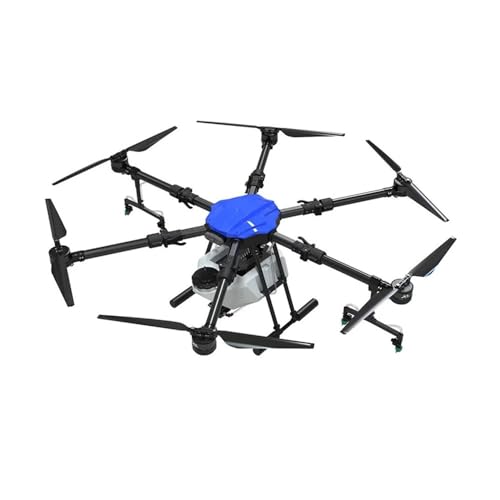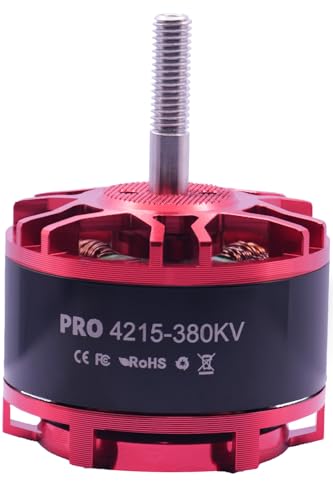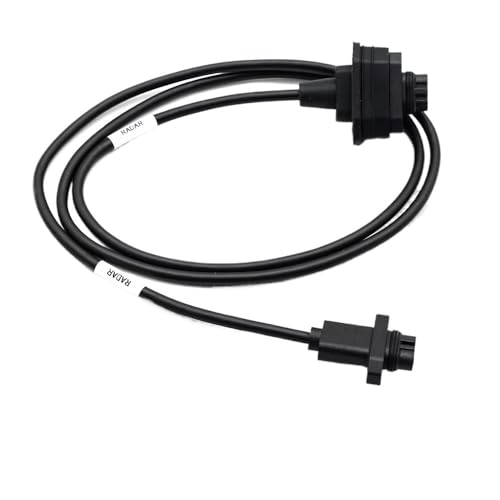Hey farmers! Ready to take your agricultural practices to the next level? The world of farming is rapidly evolving, and drones are at the forefront of this revolution. From precision crop monitoring to efficient pesticide application, the right drone can be a real game-changer, helping you optimize yields, save time, and reduce costs. But with so many options out there, how do you find the best drone for agriculture that fits your specific needs?
Don’t sweat it! We’ve done the heavy lifting for you. We’re diving deep into some of the top-performing drones and essential components that are truly transforming how we farm. Whether you’re looking for a complete aerial workhorse or crucial parts to build your ultimate agricultural drone, you’re in the right place. Let’s explore the best tools that help make smart farming a reality.
Why Drones Are a Must-Have for Modern Agriculture
Before we jump into our top picks, let’s quickly chat about why agricultural drones are becoming indispensable. These flying marvels offer unparalleled perspectives and data, leading to:
- Precision Farming: Identify problem areas in crops, manage irrigation, and apply fertilizers or pesticides exactly where needed.
- Time & Cost Savings: Cover vast areas quickly, reducing manual labor and the need for expensive traditional machinery.
- Enhanced Crop Health: Multispectral imaging helps detect disease, pest infestations, and nutrient deficiencies long before they’re visible to the naked eye.
- Yield Optimization: Informed decision-making based on accurate data leads to better crop management and higher yields.
- Environmental Benefits: Reduced chemical usage through targeted application minimizes environmental impact.
Now, let’s explore some of the best equipment that’s making waves in the field!
1. DJI P4 Multispectral Agriculture Drone, 3-Axis Stabilized

When it comes to advanced crop analysis and precise data collection, the DJI P4 Multispectral drone truly stands out. This isn’t just a drone; it’s a powerful eye in the sky designed specifically for agricultural intelligence. Its integrated multispectral imaging system allows farmers and agronomists to gather vital information about crop health, stress levels, and growth patterns, making it an undeniable contender for the best drone for agriculture for data-driven decisions. If you’re serious about precision agriculture, this drone is a fantastic investment.
Key Features:
– MULTISPECTRAL IMAGING: Advanced 6-camera array (RGB + 5 specialized spectral bands) for comprehensive agricultural analysis.
– PRECISION TECHNOLOGY: TimeSync system ensures centimeter-level accurate data collection with precise image metadata.
– FLIGHT CAPABILITIES: Up to 27 minutes of flight time and extended transmission range (4.4 miles) for efficient coverage of large areas.
– ADVANCED FEATURES: RTK module for enhanced GPS accuracy, sunlight sensor for real-time NDVI viewing, and global shutter technology for clearer images.
– PROFESSIONAL CONTROL: Dedicated remote controller with tablet/phone mount for easy operation and real-time data monitoring.
Pros:
– Exceptional accuracy for mapping and analysis.
– Comprehensive multispectral data for in-depth crop health insights.
– Long flight time and range for covering large farms efficiently.
– User-friendly for professionals with dedicated controller.
Cons:
– High initial cost, making it a significant investment.
– Primarily focused on data collection, not spraying or payload delivery.
User Impressions:
Farmers and agricultural researchers rave about the P4 Multispectral’s ability to provide incredibly detailed and actionable insights. They often highlight its robust build, ease of use for such sophisticated technology, and the invaluable data it collects, which has led to noticeable improvements in crop management and yield. Users feel it truly empowers them to make smarter, more informed decisions about their land.
Call to Action:
See it on Amazon here
2. 30L Payload Pesticide Spraying Drone 6 Axis Agriculture

For those needing a heavy-duty aerial applicator, this 30L Payload Pesticide Spraying Drone is a beast designed for efficiency. This isn’t just about flying; it’s about getting the job done with serious capacity. With its substantial 30-liter tank, it can cover vast agricultural plots quickly and precisely, making it an excellent choice if efficient and autonomous spraying is your priority. It’s built to streamline your spraying operations, reducing manual labor and speeding up critical tasks.
Key Features:
– Router Setting support, Fully Auto Flight operation with A,B Point operation.
– One Button take-off and landing for enhanced safety and time saving.
– Liquid monitoring with auto-return when liquid is used up; resumes spraying at breakpoint.
– Low battery alarm with automatic return and breakpoint marking, resuming work efficiently.
– Flying Layout setting, Map storage, Landing lock, and No-fly area setting functions.
– Precise detective Radar for stable hovering, terrain following, vibration protection, and lost contact protection.
Pros:
– Large 30L payload capacity for extensive spraying jobs.
– High level of automation for efficient and hands-free operation.
– Intelligent features like auto-return for low liquid/battery and breakpoint resume.
– Robust radar system for stable flight and terrain adaptation.
Cons:
– Requires careful handling due to its size and payload.
– Initial setup and learning curve for advanced features might be steep for some.
User Impressions:
Operators frequently praise this drone for its impressive carrying capacity and autonomous capabilities. They often mention how much time and effort it saves compared to traditional spraying methods, appreciating the precision of application and the intelligent features like breakpoint resume that enhance efficiency. It’s considered a reliable workhorse for large-scale crop protection.
Call to Action:
See it on Amazon here
3. Hexacopter Agriculture Drone Frame Kit – Fit For

While not a complete drone, this Hexacopter Agriculture Drone Frame Kit is the robust foundation upon which some of the best drone for agriculture platforms are built. Think of it as the strong skeleton for your aerial workhorse. For those who prefer to customize their agricultural drones or need to replace parts, a sturdy and well-designed frame is absolutely critical. This kit offers the flexibility to build a specialized drone tailored to your exact farming needs, whether for heavy lifting, spraying, or complex sensor integration.
Key Features:
– Large load adaptation: Fits 10L/20L various medicine box specifications for spraying operations.
– Modular design: Carbon fiber pipes and a full set of spare parts facilitate quick maintenance and replacement.
– Dimensions: Designed to fit standard drone frames.
– Unit: Optimized overall balance for smooth lift delivery.
– Compatibility: Replacement parts support a wide range of models, simplifying installation.
Pros:
– Allows for significant customization to meet specific agricultural demands.
– Modular design simplifies maintenance and repairs.
– Strong carbon fiber construction ensures durability and stability.
– Versatile enough to support various payload capacities for different tasks.
Cons:
– Requires additional components (motors, flight controller, etc.) to be a functional drone.
– Assembly knowledge is necessary.
User Impressions:
Builders and custom drone enthusiasts appreciate the high-quality carbon fiber construction and the modularity of this frame kit. They often note its excellent balance and how easily it accommodates different agricultural payloads. Users find it to be a reliable and adaptable base for constructing powerful and efficient farming drones.
Call to Action:
See it on Amazon here
4. PRO 4215-380kv Brushless Motor 6-12s Quadcopter Motor for

Every powerful drone needs an equally powerful heart, and the PRO 4215-380kv Brushless Motor is precisely that for many high-performance agricultural drones. This motor isn’t just about spinning propellers; it’s engineered for unmatched power, efficiency, and reliability, crucial elements for any farming drone that needs to carry significant payloads or operate for extended periods. It’s the muscle that ensures your drone can lift, spray, and survey with consistent, dependable thrust, making it an essential component for the best drone for agriculture operations.
Key Features:
– Unmatched Power & Efficiency: Ultra-pure copper windings, 0.2mm silicon steel stator, 200°C high-temperature enameled wire, and VPI process for rock-solid performance in harsh environments (-40°C to 80°C).
– Built Tougher to Last Longer: Titanium alloy precision-core shaft, 7075 aerospace-grade aluminum caps, N52SH arc magnets, and NMB 17x6x6 bearings for durability and heat dissipation.
– Ultra-lightweight Design: Only 9.17 ounces (260g) with 14AWG 750mm SR wires, maximizing thrust (up to 7kg per motor) and stability.
– Quiet & Smooth Operation: New optimization adjustments for high torque at low speeds, linear power output, and precise response.
– Maintenance-Free & Reliable: Easy to install and use, ideal for heavy lift applications with 13-15″ propellers.
Pros:
– Exceptional power and thrust for heavy-lift agricultural drones.
– Extremely durable and reliable, even in challenging weather conditions.
– Lightweight design contributes to longer flight times and greater payload capacity.
– Smooth and quiet operation for precise control.
Cons:
– Requires pairing with other components (ESC, flight controller, etc.).
– Knowledge of drone motor specifications and integration is needed.
User Impressions:
Pilots and drone builders highly praise this motor for its incredible lifting power and robust construction. They frequently comment on its consistent performance, even under heavy loads and long flights, making it a go-to choice for reliable agricultural drone builds. The motor’s durability and smooth operation are often highlighted as key benefits.
Call to Action:
See it on Amazon here
5. Drone Parts Radar Signal for DJI for Agras T30

In the demanding environment of agricultural fields, precise navigation and obstacle avoidance are non-negotiable. The Drone Parts Radar Signal for DJI for Agras T30 is a critical piece of technology that empowers advanced spraying drones with unparalleled awareness. This radar system is the ‘eyes’ that enable features like terrain following and obstacle detection, ensuring your drone operates safely and effectively across uneven landscapes. It’s a prime example of the specialized components that elevate a good drone to the best drone for agriculture in terms of smart, safe, and efficient operations.
Key Features:
– Good texture and have long service life.
– Ensures practicality and durability for continuous field use.
– Small and exquisite appearance, with beautiful design.
– Convenient to use and with good performance.
– Great workmanship, perfect replacement for the old or damaged parts.
Pros:
– Enhances safety by enabling precise obstacle avoidance.
– Critical for terrain-following capabilities, ensuring even spray coverage.
– Durable and built for long service life in agricultural settings.
– Direct replacement part for specific high-end agricultural drones like the DJI Agras T30.
Cons:
– Specific to certain drone models (e.g., DJI Agras T30), limiting universal compatibility.
– Requires technical knowledge for installation and calibration.
User Impressions:
Farmers utilizing drones with this radar system often express how much confidence it adds to their operations. They appreciate its role in preventing collisions and enabling their drones to maintain consistent altitude over varying terrain, leading to more uniform and effective pesticide application. Its reliability and precision are frequently lauded.
Call to Action:
See it on Amazon here
Factors to Consider When Choosing Your Agricultural Drone
Finding the perfect agricultural drone or components isn’t a one-size-fits-all situation. Here are some key factors to keep in mind:
- Purpose: Are you mainly doing crop monitoring and analysis (like with the DJI P4 Multispectral), or heavy-duty spraying (like the 30L Payload Sprayer)? Your primary goal dictates the features you’ll need.
- Payload Capacity: For spraying drones, how much liquid or granular material do you need to carry? A larger payload means fewer refills and more efficient coverage.
- Flight Time & Range: Longer flight times and extended transmission ranges are crucial for covering large agricultural plots without constant recharging or repositioning.
- Accuracy & Precision: For mapping and data collection, look for RTK/PPK GPS systems and multispectral sensors for centimeter-level accuracy.
- Autonomy & Intelligence: Features like autonomous flight paths, obstacle avoidance radar, terrain following, and breakpoint resume significantly boost efficiency and safety.
- Durability & Maintenance: Agricultural environments can be harsh. Look for robust builds, waterproof designs, and modular components for easy repair.
- Budget: Drones for agriculture can range widely in price. Determine your budget and look for the best value within that range, considering both upfront costs and long-term operational expenses.
- Regulations: Always be aware of local drone regulations regarding flight height, distance from property, and specific agricultural use.
Conclusion
The advancement of drone technology is truly revolutionizing agriculture, offering unprecedented levels of precision, efficiency, and insight. Whether you’re investing in a complete system like the DJI P4 Multispectral for detailed crop health analysis, a powerful sprayer like the 30L Payload Pesticide Spraying Drone for efficient application, or essential components like a robust Hexacopter Frame, a high-performance Motor, or an advanced Radar system to build or enhance your existing fleet, the right tools can make a monumental difference.
By carefully considering your farm’s unique needs and the capabilities of these incredible machines, you’re well on your way to finding the best drone for agriculture that will propel your operations into a more productive and sustainable future. Happy flying, and here’s to a bountiful harvest!
FAQ: Your Top Questions About Agricultural Drones Answered
Q1: What are the primary uses of drones in agriculture?
A1: Agricultural drones are used for a variety of tasks, including precision crop monitoring (detecting disease, pests, and nutrient deficiencies), field mapping, targeted pesticide and fertilizer application, irrigation management, livestock monitoring, and even planting seeds in hard-to-reach areas.
Q2: How do agricultural drones help improve crop yields?
A2: By providing highly accurate and detailed data on crop health, soil conditions, and hydration levels, drones allow farmers to make informed decisions. This leads to targeted interventions, optimizing resource allocation, reducing waste, and ultimately improving overall crop health and yield.
Q3: What features should I look for in the best drone for agriculture?
A3: Key features include multispectral or thermal imaging capabilities for crop health analysis, high payload capacity for spraying, extended flight time and range for covering large areas, RTK/PPK GPS for precision, autonomous flight modes, obstacle avoidance sensors, and a durable, weather-resistant build.
Q4: Are agricultural drones difficult to operate?
A4: Modern agricultural drones are becoming increasingly user-friendly, with many offering autonomous flight plans and one-button take-off/landing. However, operating advanced systems for precision agriculture requires some training to understand the software, data analysis, and regulatory requirements.
Q5: What’s the typical cost of an agricultural drone?
A5: The cost can vary significantly, ranging from a few thousand dollars for basic mapping drones to tens of thousands for advanced spraying or multispectral analysis systems with high payload capacities and integrated AI. Components like specialized frames, motors, and radar systems also add to the overall investment.
Q6: Do I need a special license to fly an agricultural drone?
A6: Yes, in many regions (including the United States under FAA Part 107), operating a drone for commercial purposes, including agriculture, requires a specific remote pilot certificate. Always check your local aviation authority’s regulations before operating any drone commercially.
Q7: How much area can a spraying drone cover in one flight?
A7: This depends on the drone’s payload capacity, flight speed, and battery life. A large-capacity spraying drone (like one with a 30L tank) can potentially cover several acres per flight, significantly reducing the time and labor compared to traditional methods.



